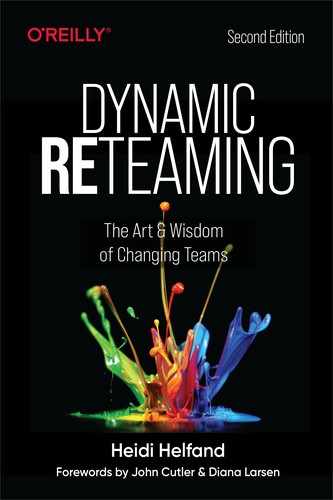Part III. Tactics for Mastering Dynamic Reteaming
Thus far, I have shared five patterns of dynamic reteaming with advice and tactics woven throughout. I’ve also shared anti-patterns. This part of the book goes deeper into the specific practices you can leverage to catalyze dynamic reteaming with greater confidence. It also shares how to cope with unexpected dynamic reteaming. Here’s how Part III is organized.
First, we get into the topic of designing your organization for dynamic reteaming. You don’t have to be starting from scratch. This section includes information on how to evolve your organization. We revisit the dynamic reteaming ecocycle in order to bring alignment to how your team views the current state of the company.
Second, we dig into some of the organizational constraints and enablers to dynamic reteaming. Following that are strategies for priming your organization for future reteaming. This includes community building and aligning on roles—both are critical scaffolds to hold continuity in place as you grow forward into change.
Third, I include some planning tools for people who want to embark on deliberate dynamic reteaming that is larger than the single-team level. Embarking on these reteamings is risky and challenging. Reorganizing teams is not a trivial endeavor. It requires great care and preparation. I’ve included several questions for you to analyze as you think about what you’re trying to do.
Following that, I include activities that you can do after your reteaming has taken place—it could be after an unexpected reteaming, or it could be after one that you deliberately catalyzed. Whether it’s after a one by one, grow and split, isolation, merging, or switching reteaming, you can use similar tactics to help people transition over to the new team situation as well as to “speed up the gel” of relationship building and to set context on the work and aligning on the workflow. I call this set of practices team calibrations.
No matter what kind of reteaming happens in your organization, it’s imperative that you learn your way forward through action and reflection. Therefore, this section concludes with some recommendations about having retrospectives to propel your organizational change. I’m hoping that all of these ideas will help you get better at reteaming so that your organization, and you, become more skillful and resilient.
